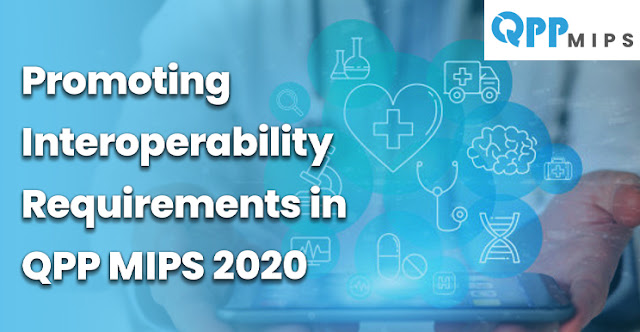
QPP MIPS 2021 is an incentive program that helps you cash on lots of financial opportunities. For instance, MIPS reporting clinicians can avoid penalties of up to 9% as CMS (Centers for Medicare and Medicaid Services) has made it compulsory for every clinician to participate in this program.
Failure to submit data cab lead clinicians to incur the penalty but also lose the opportunity to earn incentives.
A Background to MIPS 2021 Quality Requirements
MIPS is one of its kind programs accessible to MIPS qualified clinicians for gathering and revealing information about their value-based healthcare services. Today, we will talk only about the Quality category that estimates medical care cycles, results, and patient encounters in general.
Quality Caters to 40% of Final Score
This percentage change almost every year because of Exception Applications or Alternative Payment Model (APM) Entity investment.
Clinicians can consult MIPS consultants to demonstrate the true potential of their performance to CMS. General Surgery Billing Services
Moreover, for general details, you can read this article.
What Quality Data Should I Submit?
- There are 6 assortment types for MIPS quality measures
- Electronic Clinical Quality Measures (eCQMs)
- MIPS Clinical Quality Measures (CQMs)
- Qualified Clinical Data Registry (QCDR) Measures
- Medicare Part B claims measure
- CMS Web Interface measures
General Detailing Prerequisites for MIPS 2021 Data Submission (for those not revealing through the CMS Web Interface)
You'll ordinarily have to submit gathered information for no less than 6 measures (counting 1 result measure or high-need measure without an applicable outcome measure), or a complete measure set.
You'll have to report data for basically 70% of the patients who fit the bill for each action.
You can submit measures from various collection types (except CMS Web Interface measures) to satisfy the prerequisite to report at At least 6 quality measures.
CMS will compute and score the performance of individuals, groups, and virtual groups on 2 new regulatory case estimate when the individual, groups, or virtual groups meets the case least, and clinician the necessity for the measure
Medical clinic Wide, 30-Day, All-Cause Unplanned Readmission (HWR) The rate for the Merit-Based Incentive Payment Program (MIPS) Eligible Groups (This action is supplanting the All-Cause Hospital Readmission (ACR) measure, Quality ID 458).
Hazard normalized Complication Rate (RSCR) following Elective Primary Total Hip Arthroplasty (THA) as well as Total Knee Arthroplasty (TKA) for Merit-based Incentive Payment System (MIPS).
How Are Measures Scored?
CMS decides to measure MIPS 2021 performance based on measure performance as per the benchmark.
If an action can be dependably scored against a benchmark, it for the most part implies:
- A benchmark is accessible.
- Has no less than 20 cases.
- The data fulfillment standard is for the most part 70%.
CMS Web Interface measures are scored against the Shared Savings Program benchmarks.
Criteria for Bonus Points
- You can acquire quality extra focuses in the following manner.
- Submit at least 2 results or high-need quality measures.
- This reward isn't accessible for the first, the required result, or high-priority quality measure.
This reward isn't accessible for measures needed by the CMS Web Interface, however, is accessible to MIPS eligible groups that report the CAHPS for MIPS overview notwithstanding the CMS Web Interface measures.
The Easy Formula for Maximizing MIPS Quality Performance Score
What you should and shouldn’t do to maximize your MIPS Quality score is mentioned above. But a detailed formula is given below to help strategize accordingly.
Select Only the Best Specialty-Specific MIPS Quality Measures
When you or your MIPS Qualified Registry is in the measure selection phase, make sure you select more than 6 measures to report to the CMS.
Earn Up to 10% of Bonus on the Quality Score with CEHRT Bonus
If MIPS eligible clinicians go for end-to-end MIPS reporting 2021, they are qualified for 10% of the MIPS bonus concerning the CEHRT bonus. It means that you can earn 1 point per submitted measure.
Performance Benchmark Requirement
QPP MIPS quality measures that do not come with a performance benchmark do not grant more points than 3.
Data Completeness Rule
For MIPS 2021 data submission, eligible clinicians must fulfill the data completeness rule. You are required to submit 70% of the data complied with the eligible cases.
Small medical practices have the flexibility that even if they don’t meet the data completeness rule, they still can receive 3 points for each MIPS Quality measure. However, this option is not valid for large or established medical practices. Neurology Billing Services
Case Minimum Requirement
To maximize performance in the MIPS quality category in 2021, clinicians must meet the case minimum criteria of 20 cases per MIPS quality measure. Only this way, you can receive more than 3 points per measure.
Use the certified version of EHR innovation (CEHRT) to gather measure information and meet the electronic reporting requirements.
Six extra bonus points are added to the quality performance score for clinicians in little practices who submit 1 measure, either exclusively or collectively or in virtual groups. This reward isn't added to clinicians or gatherings who are scored under facility-based scoring.
You can likewise target up to 10 extra rate focuses dependent on your improvement in the quality performance from the previous year. You can also consult MIPS Qualified Registries for streamlined MIPS reporting.
Read More: About Quality Payment Programs to Flourish in MIPS Healthcare Services
Introduction to MIPS 2021 Registry Reporting
The Merit-based Incentive Payment System (MIPS) is a crucial aspect of Medicare's Quality Payment Program (QPP). If you're a healthcare provider, maximizing your MIPS Quality Performance Score is essential to avoid penalties and potentially secure incentives. In this article, we will guide you through everything you need to know to enhance your Quality Performance Score in the 2021 MIPS Registry Reporting.
What is MIPS and Its Importance?
MIPS is designed to measure and reward healthcare professionals for the quality of care they provide to Medicare beneficiaries. Providers are scored based on four categories: Quality, Cost, Improvement Activities, and Promoting Interoperability.
Understanding the MIPS Framework
MIPS is not just about compliance—it’s about excelling in the areas that matter most to patient outcomes. The Quality category alone makes up 40% of the final score for 2021, making it a critical focus for providers.
Why Quality Performance Matters in MIPS
Achieving a high score in Quality Performance can positively affect your overall MIPS score. This is vital because failing to meet the minimum performance threshold could result in penalties, which can impact your Medicare reimbursement.
The MIPS Scoring Breakdown
How MIPS Quality Score is Calculated
Your MIPS Quality Score is calculated based on the specific quality measures you report. Each measure is scored from 1 to 10 points based on your performance, and the total score is then weighted within the overall MIPS score.
Weight of Quality in the Overall MIPS Score
For MIPS 2021, the Quality category accounts for 40% of your total score, making it the most significant single component. This means that even small improvements in your quality measures can greatly impact your final score.
Key Changes in MIPS 2021
Every year, MIPS evolves, and 2021 introduced several key changes that providers must be aware of to stay compliant and competitive.
New Requirements for MIPS 2021
In 2021, there were updated reporting requirements, including new quality measures and changes in the weights of the performance categories. It's essential to review these changes to ensure you're reporting correctly.
The Impact of COVID-19 Adjustments
The COVID-19 pandemic led to temporary adjustments in MIPS reporting. Understanding these exceptions and how they apply to your practice can help mitigate any potential penalties.
How to Select the Best Quality Measures
Choose Measures Relevant to Your Practice
Not all quality measures are created equal. You should focus on measures that align with your specialty and the services you provide. Selecting the right ones can significantly improve your score.
Top Quality Measures for Various Specialties
For example, if you specialize in cardiology, focus on measures like "Control of High Blood Pressure." For family medicine, "Tobacco Use Screening" may be a better fit. Selecting measures with high potential for performance improvement is key.
Using Benchmark Data to Improve Your Quality Score
How Benchmarking Works in MIPS
Benchmarking is a critical component of MIPS scoring. Your performance is compared to national benchmarks, which can significantly impact how many points you receive for each measure.
Why High Benchmarks Should Be Your Target
If your performance is at or above the national benchmark, you can maximize the points earned for that measure. Therefore, targeting high benchmarks should be part of your strategy.
Documenting and Reporting Quality Measures
Step-by-Step Guide to Submitting Quality Measures
Accurate documentation is essential for successful MIPS reporting. Start by gathering all relevant data and ensure it's properly coded. Submit the data through the registry or EHR system, ensuring accuracy throughout the process.
Common Mistakes to Avoid
Errors in documentation or reporting can significantly reduce your score. Avoid common pitfalls such as incomplete data submission, incorrect measure selection, or late submissions.
How to Utilize Registry Reporting for Success
Benefits of Registry Reporting
Using a qualified clinical data registry (QCDR) can streamline your MIPS reporting process. Registries are specifically designed to help you submit data efficiently while ensuring you meet all reporting requirements.
Streamlining Data Submission for MIPS
A good registry can automate much of the data collection and submission process, reducing the administrative burden on your team.
Maximizing Performance with EHR Systems
Leveraging EHR for Better Reporting
Electronic Health Records (EHR) systems can play a pivotal role in improving your MIPS quality score. EHRs allow for real-time tracking of performance measures, ensuring you're always up to date.
Automating Data Collection and Reporting
By automating data collection and reporting, you can reduce errors and ensure a more accurate and timely submission, which is crucial for maximizing your score.
Understanding the MIPS Scoring Threshold
How the Scoring Threshold Affects Your Practice
The minimum performance threshold for MIPS 2021 is 60 points. Providers who fail to meet this threshold will face penalties, while those who exceed it can earn positive payment adjustments.
Penalties for Not Meeting the Minimum Score
If your score falls below the threshold, your Medicare payments will be reduced, which can significantly impact your practice's revenue.
Strategies to Maximize Your Quality Performance Score
Focus on High-Impact Quality Measures
Identify high-impact quality measures that can boost your score. Focus on those that offer the most points based on your practice's performance capabilities.
Continuous Improvement and Tracking
Regularly track your performance throughout the reporting year and make adjustments as needed to ensure you're always on track to achieve a high score.
The Role of Feedback Reports
Understanding Your MIPS Feedback
After submitting your MIPS data, you'll receive feedback reports detailing your performance. Understanding these reports is key to making improvements in future reporting years.
How to Use Feedback to Improve Scores
Use the insights from your feedback reports to identify areas for improvement and adjust your strategy for the following reporting year.
Avoiding Common Pitfalls in MIPS Reporting
Top Mistakes That Lower Your Score
Some common mistakes include incorrect coding, late submissions, or failing to meet measure-specific benchmarks. Avoid these pitfalls to ensure a high score.
How to Fix Errors in Your MIPS Data Submission
If you discover an error in your data submission, it's important to act quickly. Most reporting systems allow for corrections before the submission deadline.
Labels: MIPS 2021, MIPS 2021 reporting, MIPS consultancy, MIPS Data Submission, MIPS in healthcare, MIPS incentives, MIPS Qualified Registries, MIPS Quality Measures

 As of now, the reporting requirements for QPP MIPS 2019 and MIPS 2020 realign for clinicians during the pandemic.
As of now, the reporting requirements for QPP MIPS 2019 and MIPS 2020 realign for clinicians during the pandemic. 







